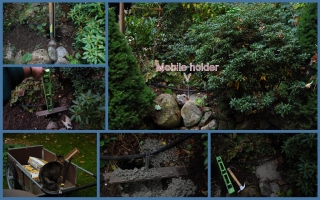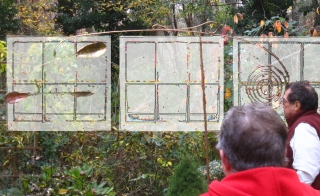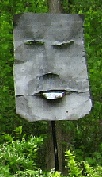Posts Tagged ‘garden’
Making Cheese at Home
Blessed are the Cheesemakers
Life of Brian
Harry Poulter’s domain ranges beyond the garden and into the kitchen. He recently applied his skills at grain fermentation to another homemade specialty – Cheese making. Think of his story as “Rake and Palate…”
If you can cook, you can start making cheese at home. If you have ever brewed beer, you are halfway there. The simplest cheeses (fresh, spreadable) can be made in a day, with ingredients as common as milk and lemon juice. The most complex cheeses may require heavy presses and months or years of aging.
In addition to what you might think of as cheese, you can easily make cultured butter, yogurt, kefir, paneer, crème fraiche, mascarpone, cream cheese and many more cultured dairy products. I guarantee the fresh homemade varieties will delight you. Guests enjoy knowing you made the cheese you are serving. And savoring your own home-baked bread with your own homemade cheese or butter is an irreplaceable treat for the senses.
I got started when an old friend told me his precocious 11-year old stepdaughter was making cheese. That was a challenge I couldn’t ignore. I thought “Why am I not making my own cheese?” I had been making my own yogurt for years. A short time later, I had acquired the tools and knowledge and had the process down for making some basic and semi-advanced cheeses.
Interested? I’ll show you how to get started.
Cheese, Glorious Cheese
The origins of cheese making are lost in the mists of time, but the process was well established by the time of the ancient Romans and was described by writers of the period. Cheese making probably developed by a series of serendipitous discoveries, which led to a process by which the protein and fat of milk could be separated, solidified and preserved. Rennet and milk-digesting bacteria help acidify the cheese, and, with the addition of salt and other beneficial microbes and molds, inhibit the development of harmful or decay-producing microbes. The breakdown of proteins also leads to the development of wonderful flavors. Local milk varieties, native micro-flora and –fauna and special conditions (like caves) led to regional specialties. The ancient Romans especially esteemed cheeses from what is now France (for much more, see “On Food and Cooking – The Science and Lore of The Kitchen” by Harold McGee).
Information on Cheese Making
Get some good books on the subject. I find it is best, especially for the more complex cheeses, to compare several recipes and see what they have in common and how they differ. I keep a record (my “cheese log”) of each batch to record any notable successes or attempts that could be improved. The book I use most frequently is “Artisan Cheese Making at Home” by Mary Karlin. It’s a good reference and cookbook, though there are some math errors in some recipes (again, compare several sources). Second favorite is “200 Easy Homemade Cheese Recipes” by Debra Amrein-Boyes. I also use Ricki Carroll’s “Home Cheese Making”. There are also numerous online sources, YouTube videos, etc. The most useful online site is probably www.cheeseforum.org . Cheese making suppliers’ websites (see Supplies) also have recipes and tips.
Equipment and Supplies
If you are a cook, you probably have the equipment you need to make the simplest cheeses. For the more ambitious cheeses, you will need a few specialized items – molds for forming cheeses, a special ladle and curd knife, butter muslin (a fine-weave version of cheesecloth), draining containers, etc. My biggest investment so far has been a “cheese cave” which provides a controlled environment at about 50 degrees Fahrenheit. I use a “dorm-style” refrigerator, with no freezer compartment, that is plugged into a thermostatically switched outlet. The switch has a long wire probe that is run into the refrigerator to monitor the temperature. Amazon sells a good switch for about $50 (Johnson Controls A19AAT-2C). The best sources I have found for equipment, supplies and specialized ingredients are www.thecheesemaker.com and www.cheesemaking.com
Ingredients
First – the freshest dairy products you can find. A local dairy is your best choice. Try a farmer’s market, or Whole Foods. We have a smallish dairy in nearby Roanoke, VA that sells good quality milk and cream, including non-homogenized (cream on top) milk, which makes a superior cheese. For recipes requiring cream or half-and-half, look for brands which have no additives and are not ultra-pasteurized.
Mold cultures/bacteria cultures/rennets – These specialty ingredients require an initial investment, but they keep a long time. Store cultures in the freezer, rennet in the ‘fridge. Animal rennet is made from the stomach of calves, so some people avoid it. I find that vegetarian rennet is suitable for all but some long-aged cheeses. Commercial cheese manufacturers have started to use rennet produced by modified bacteria, but as far as I know this is not yet available to the home cheese maker.
Let’s make cheese!
1. Dead simple cheese (lemon cheese)
Ingredients
¼ – ½ cup fresh lemon juice (2 or three lemons)
½ tsp. salt – kosher salt works well
Optional herbs and/or garlic
Procedure
Heat the milk slowly, stirring frequently, to about 175 degrees F. Remove from heat and stir in ¼ cup lemon juice. Wait 15 minutes and see if you have a distinct separation of curds and clear whey. If the whey is still cloudy, stir in another tbsp. of lemon juice and wait another 15 minutes. Repeat until you have a clear separation.
Line a colander with several layers of cheesecloth (or use butter muslin if you have it). Dampen the cloth and dump the contents of the pot into it. Set the colander over a bowl if you want to save the whey (for bread making). You can either leave it to drain as is, or gather up the cloth into a bag and hang it. After an hour or two, it should have a good firm texture.
Put the curds in a bowl and stir in the salt. You can also add a mixture of herbs (Herbes de Provence is good), chives, garlic, etc. to taste. Refrigerate to firm up the cheese and blend the flavors. This cheese will keep well for about a week.
2. Camembert – A good beginner’s “real” cheese.
I won’t give every detail of the recipe here, since it is widely available, and you should have at least one good cookbook before you get this far, but I will illustrate the process.
Sanitation
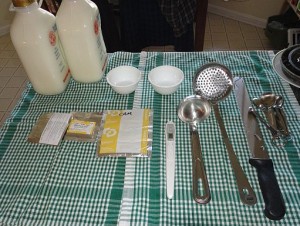
Thermometer, ladles, curd knife, measuring spoons, etc. All sterilized and laid out on a clean cloth. The foil packs hold the bacterial and mold cultures.
Since this cheese needs to age for a while, we need to be more careful about sanitation than with our quickie lemon cheese. We don’t want bad bugs or molds to get a foothold. The first step is to sterilize all cooking vessels and equipment that will contact the milk and cheese. A weak bleach solution (1 tsp/gallon of water) is sufficient. Brewer’s B-Brite or similar oxidizing cleaners will also work.
The perforated PVC sections are open-bottomed molds, or “hoops”, for forming the Camembert. The bamboo mats are sushi mats. Also a rimmed baking sheet and two plastic cutting boards. All have been sterilized.
Procedure
Heat the milk, slowly, in a heavy-bottomed (sterilized) pot to 85 degrees F. Then sprinkle on the starter culture (bacteria), and the cheese molds which will form the white rind of the Camembert. After letting the cultures hydrate on the surface for a few minutes, stir them in and hold the temperature for 90 minutes. Most cookbooks advise you to use some kind of double boiler or stove-top water bath to maintain heat. I just fill the kitchen sink with water at the target temperature.
After the curds have achieved a “clean break” from the whey, we slice the curds into chunks. They will not be neat cubes, but a cottage cheese-y mess. The whey should be clear, though.
After cutting, the curds are stirred, then allowed to rest to consolidate and further separate from the whey.
Once the curds are consolidated, we spoon them into the two hoops, which are set upon a sushi mat, which is on a cutting board inside the baking pan.
Then, another sushi mat and cutting board are placed on top. Periodically, we need to pick up the whole assembly and flip it so the alternate cutting board is on the bottom. This is a little tricky. We may also need to drain the bottom pan.
After repeated flipping and an overnight rest, the cheeses are consolidated into their final form. They have picked up a nice pattern from the sushi mats. At this point, they are rubbed with salt to inhibit “bad” mold formation and moved to a draining container.
My cheese “cave” is a refrigerator I modified to maintain 50 degrees. The red cheeses in the photo are Jarlsberg (I hope. I won’t know for a couple of months how they turned out).
The Camembert rounds stay in the draining container for about 2 weeks. After that, they are moved to cheese bags or plastic wrap, still in the “cave”, for about another 2 weeks, until the centers are soft. Then they can be moved to regular refrigeration and the aging process stops. You don’t want to over-age a Camembert, because it will start to break down and get a little stinky. Still safe and edible but not as tasty.
Finally…
Almost finished Camembert covered with fine white mold.
Happy cheese making!
Garden Mind
I got the White Flower Farm Spring 2012 catalog this week. It’s a page turner as usual, with saturated floral images of garden gems in perfect flower – where the reds are redder, the greens greener and the true blues truer than life. One day, there might be a garden catalog with wilted, spent flowers going to seed. Unlikely.
My garden overwinters – stark and dreary, especially without frost or snow cover. I hope it gets cold enough to kill the bad bugs; I hope there is enough snow cover, eventually, to supplement the good stuff (my brother told me snow is the poor man’s fertilizer). But, I digress. What is really at work is stillness. No growth, just the remnants of the garden being earth bound — skeletal, essential, and creating reserves for the proper blooming time.
What I have is garden mind.
Our garden (aka, “R” Garden) sits, while last year’s beauty decomposes into next year’s growth. I see the garden’s shape from our upstairs window – the straight and curvy lines, the beds, the flow from one section to another joined by lawn, paths, steps, and bridges. I like this flow and work to refine it in my mind: firm up that edge with a low border, trim that shrub to be a better neighbor, hack that pachysandra, reset those stones, et cetera. In a process of refinement, endless tweaking shapes the garden and morphs its profile. Its essential personality, established long ago, matures incrementally, bringing charm, whimsy and nature into harmony improved by age.
Of course it’s a living thing and changes occur, apparently spontaneously, as well. Like the clumping bamboo that finally, finally decided to become the screen I imagined ten years ago. Who knew it would take this long? I suppose that’s where annuals come in. They provide the instant gratification that delights the eye and other senses. Not much mystery but adornment galore and great expectations easily met. We enjoy the splash, the visual spice, and the abundance of blooms overlaying the perennial foundation.
The garden mind dwells on ideas and suffers no toil. No: weeding, spraying, mowing, aching backs or biting no-see-ums. It sees golden possibilities; it harbors hopes and plans — flights of fancy that could occupy the whole of next season. It’s a great place to visit.
It’s the Most Wonderful Time of the Year
(inspired by the best spring day of 2011; with apologies to Andy Williams’ version)
It's the most wonderful time of the year! The buds are all popping There's nothing that's stopping, It's finally here!!! It's the most wonderful time of the year! It's the hap - happiest time of them all! With the soil full of soiling And ants gladly toiling On peonies tall! It's the hap- happiest time of them all!
Greening shrubs that need pruning, The warblers returning, And breezes no longer so cold. Humming birds begin tuning And daphne's scent looming Like gardens awakening of old It's the most wonderful time of the year! When the bleeding heart's bleeding And dandelion weeding Brings backaches severe! It's the most wonderful time of the year!
I've got shrubs that need pruning, The warblers returning, And breezes no longer so cold. Humming birds' perfect tuning And blossoms ballooning Like gardens awakening of old It's the most wonderful time of the year! It's the most wonderful time of the year!
Dirt – A Love Story
It’s everywhere! We scrub it off our hands, our shoes, our personae. We think: clean = good, dirt = bad. Even gardeners succumb to dirt-riddance — we clean our gardens in the spring! But I’m telling you — dirt is your friend, not your enemy.
Here’s why.Get Smart – Eat Dirt!
Dirt harbors essential micro-organisms (like bacteria and fungi). “Yikes!“, you shriek, “That’s a good thing?“. Not just good, essential.
Soil scientists say each gram of soil (less than a teaspoonful) contains over 1,000,000,000 microbes (1 billion!), hosting over 10,000 different species. Here’s what some of these buggers do:
- grow our crops,
- convert wastes into compost,
- deliver vitamins to plants (in the “rhizosphere“),
- kill insects,
- consume toxic waste (like oil spills), and
- create soil in the first place
When soil is first made, for example after a volcano, some nutrients are missing, including nitrogen and carbon. Therefore, the first organisms to colonize the soil are generally nitrogen fixers and photosynthesizers that fix carbon. [DLC-ME]
Furthermore, a study conducted by researchers Dorothy Matthews and Susan Jenks at The Sage Colleges (Troy, NY) suggests that soil-borne germs play a role in reducing anxiety and enhancing learning. The study attracted lots of coverage, like “Can Bacteria Make You Smarter?” (Science Daily) and on Radio Netherlands “The Dirt Show“. Here the two researchers pose with dirt martinis (yuk!).
Anyway, get smart — eat dirt!
Dirt – Accidentally in Love
I began my wholesome relationship with dirt by accident, often the case with true love. I had planned a border along the front driveway and set to work removing a strip of sod about 2 feet wide and 80 feet long. I had loam delivered to create the bed where the sod once was. For expediency, I dumped the torn up sod in a low spot in the backyard; it formed a chunky mound on which I later dumped fall leaves and some additional loam on top to hold it all in place.
I finished the driveway border project, planting daylilies, astilbe and daffodils topped with a layer of bark mulch. Over the next couple of years I expanded the experimental mound in the backyard, adding a curved path with pea stone gravel, throwing in Bleeding Hearts, Oriental lilies, astilbe, a leftover Alberta Spruce, a red twig dogwood, Japanese dwarf spirea, ferns (etc.). What I found was — it didn’t matter what I planted there. Everything flourished. I had accidentally created a rich, organic home for my woodland plants! Dirt won me over and I’m accidentally in love!
I’ve since enlarged the accidental garden with yard clippings, chopped oak leaves, more loam, and barn “soil” from a nearby stable. In the expanded section, I added shrub roses, Columbine, an ornamental Japanese maple, American ginger, epimedium, sweet pepperbush (Clethra) and a stone wall. We’re happy together.
The Joy of Dirt
Back to the driveway border. It perennially struggles — its loamy bed dries out in summer because it doesn’t have enough organic material to store water for long. The day lilies come up OK, but they haven’t prospered; ditto the daffodils. Some day, I will re-visit this project and give it the tender lovin’ dirt it needs.
I’ve started another mound in the front yard: lawn clippings, chopped leaves, compost from the Marshfield transfer station (aka, the dump), and a decorative covering of bark mulch. It’s January and the mound is slumbering beneath a foot of snow, while microorganisms and worms are busily feeding and creating new dirt. Oh, joy!
Now it’s your turn — Share the dirt!
Tin Man Garden Art
Tin Man overlooks the garden, standing near its wooded, western edge. He is flanked by two Tupelo trees and footed by woodland perennials: ferns, trillium, Lenten Rose (helleborus),
and viney ground cover (ajuga reptans). Hint: Don’t ever plant Bugleweed – ajuga. Ever.)The Tin Man Cometh
Tin Man was created by Peter Beals, an auto body repair man from Kingston, Massachusetts. I purchased his work
at the annual North River Arts Society (NRAS) Festival of the Arts in Marshfield Hills, MA because it appealed to a grand whimsy and the price was right. Standing over 7 feet (2.1 meters) tall, Tin Man has occupied his outpost in my garden since June 2, 2006.He debuted at the garden party celebrating Kenyatta Braithwaite’s (Weymouth, MA) academic success. I had to disrupt NRAS protocol to liberate Tin Man in advance from the Festival; accomplished with support from our friend and NRAS kingpin, David Brega, just in time for Keny’s party. Tin Man has attended all of our backyard events ever since.
Ars Longa Vita Brevis*
Gazing across the quiet garden he is stalwart, with a look of permanence and solidity.
But his profile reveals another truth – Tin Man is shallow and insubstantial. Almost two-dimensional, like Flat Stanley.
He takes our parties seriously. He attracts attention, yes, and teasing. But teasers poke fun fondly and he’s never offended.
*Ars longa, vita brevis (Hippocrates), commonly translated as “art is long, life is short.”
Tin Man Zeitgeist
Postured, impermanent, intent, revealing and deceiving. Tin Man was one of the first non-functional additions to my garden. He has his own story and he’s sticking to it. What story does your garden have? Share it!
4 Hints for Getting Started in the Garden
Guest blog: Christopher Waddell (Hanson, MA). Chris has been growing his own fruits and vegetables organically for more than two decades.
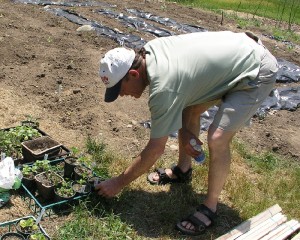
Chris Waddell in his garden
His suggestions for your success follow. He begins…
The best way to learn how to garden is to read all you can and then go out and kill every plant at least once. Try any/everything and learn from mistakes. Any hints I share were earned that way. Here are some for early in the season…
- Not yet!!!
Seeds started now languish from low sun on windowsills and in the sky. If they do take, they’ll grow long, skinny and weak way too soon to be put out.
Exception: geranium seeds. They’re slow. You’ll interplant them with veggies to ward off and kill beetles. - Read catalogs
They glow and motivate and work to get you daydreaming and planting. Paper catalogs are more chock-full of info, like planting zones, pollination, ad infinitum, than the online ones. Go online to order a copy. There are many; some with too much hype, others limited in scope or just middle retailers.
Authentic seed growers include Park Seed Co. (my favorite), Burpee, Miller, Jung, R. H. Shumway. Enjoy; then believe about half the outlandish claims. Read for what they fail to mention.
- Avoid heirloom varieties
Those are types of yore with little resistance to plant diseases and pests that have evolved over the past few decades by destroying crops. To keep these plants healthy requires tons of spraying.
Hybrids were developed to build in natural resistance to plant stressors like fungus, rust, aridity, insects. Go a season or two with your hybrids. Then try some of the old varieties.
- Go outside
Throw all the organic matter you can on your soil, like leaves, grass, seaweed, manure (any), kitchen waste. Snow is an excellent slow-release fertilizer. Then go in, get warm, browse the catalogs and dream of a sun higher in the sky.
Thanks, Chris! I mentioned gardeners’ traits in my Seeds are in post (imagination, faith, patience, diligence, hope…). Chris embodies all these and then some.
What makes your garden grow? Share some of your hints!
Seeds are in
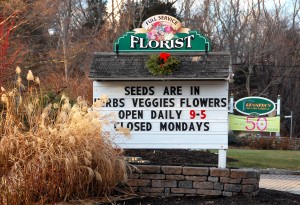
January 8, 2011 - Seeds are in
Like plants, gardeners come in many varieties, but they seem to share some common traits: imagination, faith, patience, optimism, diligence, hope…
What other gardener traits can you think of? Share your perspective.

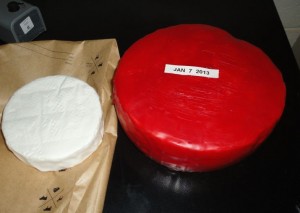
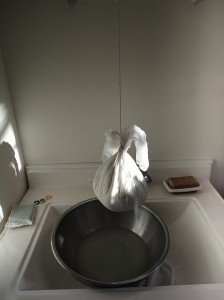
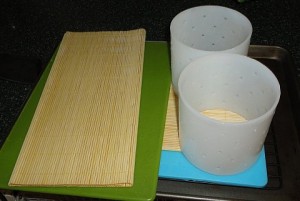


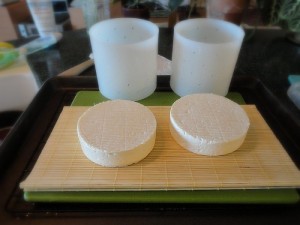
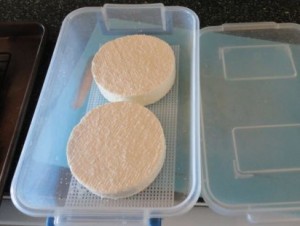
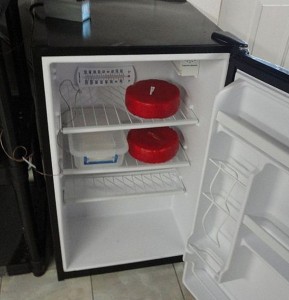
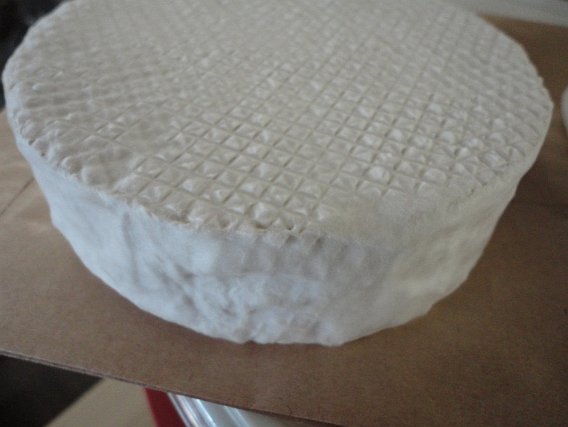
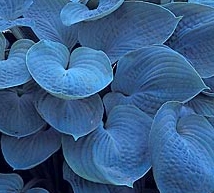
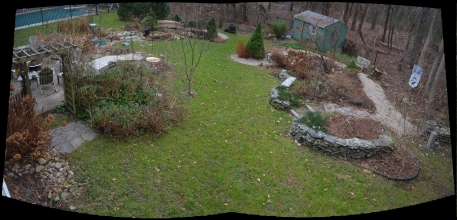

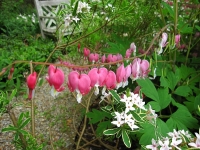
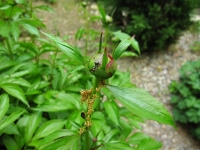
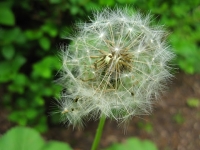
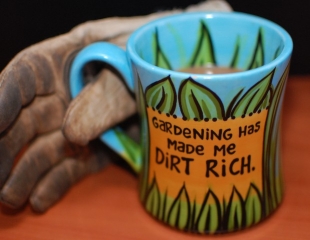



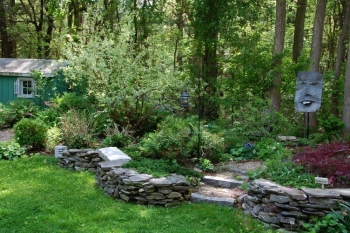
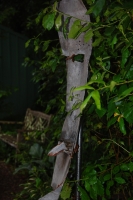
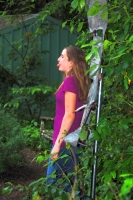
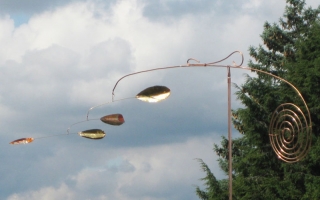
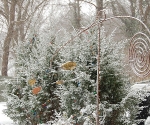 sarabande-in-snow-4
sarabande-in-snow-4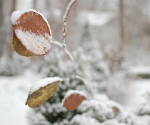 sarabande-in-snow-5
sarabande-in-snow-5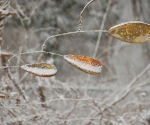 Sarabande In Snow 2
Sarabande In Snow 2